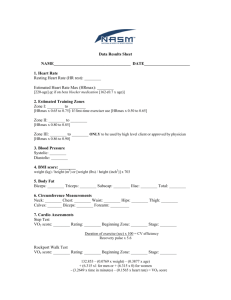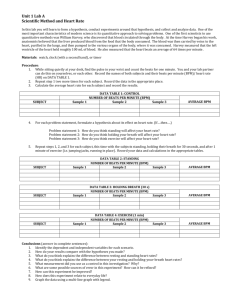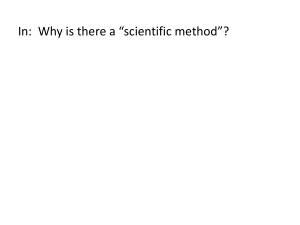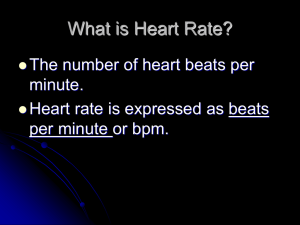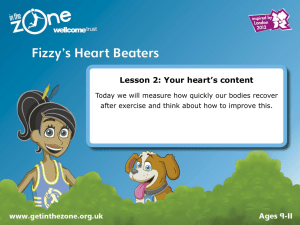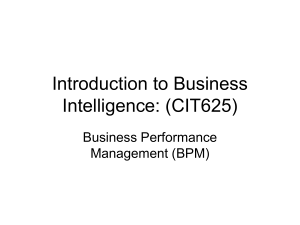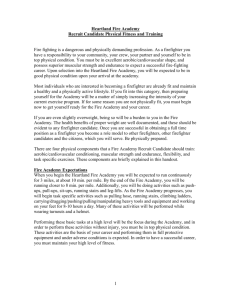Resting heart rate
advertisement
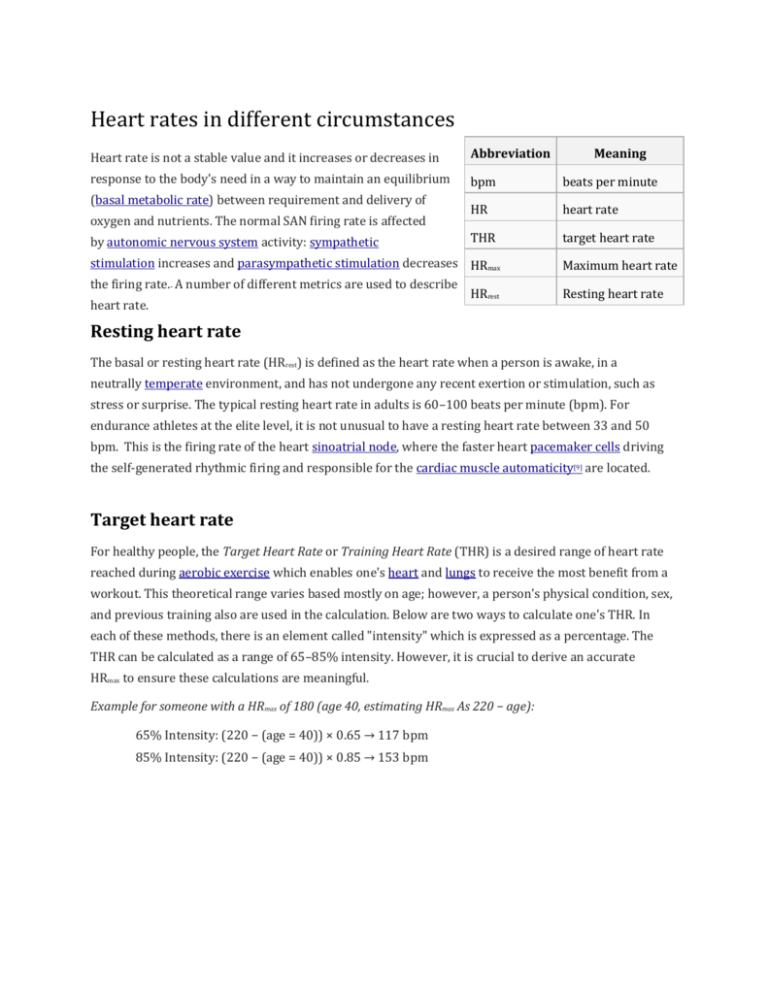
Heart rates in different circumstances Heart rate is not a stable value and it increases or decreases in Abbreviation response to the body's need in a way to maintain an equilibrium bpm beats per minute HR heart rate THR target heart rate (basal metabolic rate) between requirement and delivery of oxygen and nutrients. The normal SAN firing rate is affected by autonomic nervous system activity: sympathetic stimulation increases and parasympathetic stimulation decreases HRmax the firing rate. A number of different metrics are used to describe HRrest heart rate. Meaning Maximum heart rate Resting heart rate Resting heart rate The basal or resting heart rate (HRrest) is defined as the heart rate when a person is awake, in a neutrally temperate environment, and has not undergone any recent exertion or stimulation, such as stress or surprise. The typical resting heart rate in adults is 60–100 beats per minute (bpm). For endurance athletes at the elite level, it is not unusual to have a resting heart rate between 33 and 50 bpm. This is the firing rate of the heart sinoatrial node, where the faster heart pacemaker cells driving the self-generated rhythmic firing and responsible for the cardiac muscle automaticity[9] are located. Target heart rate For healthy people, the Target Heart Rate or Training Heart Rate (THR) is a desired range of heart rate reached during aerobic exercise which enables one's heart and lungs to receive the most benefit from a workout. This theoretical range varies based mostly on age; however, a person's physical condition, sex, and previous training also are used in the calculation. Below are two ways to calculate one's THR. In each of these methods, there is an element called "intensity" which is expressed as a percentage. The THR can be calculated as a range of 65–85% intensity. However, it is crucial to derive an accurate HRmax to ensure these calculations are meaningful. Example for someone with a HRmax of 180 (age 40, estimating HRmax As 220 − age): 65% Intensity: (220 − (age = 40)) × 0.65 → 117 bpm 85% Intensity: (220 − (age = 40)) × 0.85 → 153 bpm Maximum heart rate The maximum heart rate (HRmax) is the highest heart rate an individual can achieve without severe problems through exercise stress and generally decreases with age. Since HRmax varies by individual, the most accurate way of measuring any single person's HRmax is via a cardiac stress test. In this test, a person is subjected to controlled physiologic stress (generally by treadmill) while being monitored by an ECG. The intensity of exercise is periodically increased until certain changes in heart function are detected on the ECG monitor, at which point the subject is directed to stop. Typical duration of the test ranges ten to twenty minutes. Adults who are beginning a new exercise regimen are often advised to perform this test only in the presence of medical staff due to risks associated with high heart rates. For general purposes, a formula is often employed to estimate a person's maximum heart rate. However, these predictive formulas have been criticized as inaccurate because they generalized population-averages and usually focus on a person's age. It is well-established that there is a "poor relationship between maximal heart rate and age" and large standard deviations around predicted heart rates Maximum heart rates vary significantly between individuals. Even within a single elite sports team, such as Olympic rowers in their 20s, maximum heart rates have been reported as varying from 160 to 220. Such a variation would equate to a 60 or 90 year age gap in the linear equations above, and would seem to indicate the extreme variation about these average figures. Figures are generally considered averages, and depend greatly on individual physiology and fitness. For example, an endurance runner's rates will typically be lower due to the increased size of the heart required to support the exercise, while a sprinter's rates will be higher due to the improved response time and short duration. While each may have predicted heart rates of 180 (= 220 − age), these two people could have actual HRmax 20 beats apart (e.g., 170-190). Further, note that individuals of the same age, the same training, in the same sport, on the same team, can have actual HRmax 60 bpm apart (160–220):[16] the range is extremely broad, and some say "The heart rate is probably the least important variable in comparing athletes Tachycardia Tachycardia is a resting heart rate more than 100 beats per minute. This number can vary as smaller people and children have faster heart rates than average adults. Physiological condition when tachycardia occurs are 1. Exercise 2. Pregnancy 3. Emotional conditions such as anxiety or stress. Pathological conditions when tachycardia occurs are: 1. Sepsis 2. Fever 3. Anemia 4. Hypoxia 5. Hyperthyroidism 6. Hypersecretion of catecholamines 7. Cardiomyopathy 8. Valvular heart diseases 9. Acute Radiation Syndrome Bradycardia Bradycardia was defined as a heart rate less than 60 beats per minute when textbooks asserted that the normal range for heart rates was 60–100 BPM. The normal range has since been revised in textbooks to 50–90 BPM for a human at total rest. Setting a lower threshold for bradycardia prevents misclassification of fit individuals as having a pathologic heart rate. The normal heart rate number can vary as children and adolescents tend to have faster heart rates than average adults. Bradycardia may be associated with medical conditions such as hypothyroidism. Trained athletes tend to have slow resting heart rates, and resting bradycardia in athletes should not be considered abnormal if the individual has no symptoms associated with it. For example, Miguel Indurain, a Spanish cyclist and five time Tour de France winner, had a resting heart rate of 28 beats per minute,[31] one of the lowest ever recorded in a healthy human. Daniel Green achieved the world record for the slowest heartbeat in a healthy human with a heart rate of just 26 bpm in 2014. Arrhythmia Arrhythmias are abnormalities of the heart rate and rhythm (sometimes felt as palpitations). They can be divided into two broad categories: fast and slow heart rates. Some cause few or minimal symptoms. Others produce more serious symptoms of lightheadedness, dizziness and fainting.
